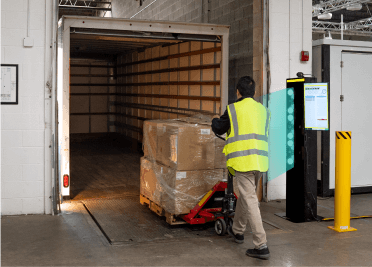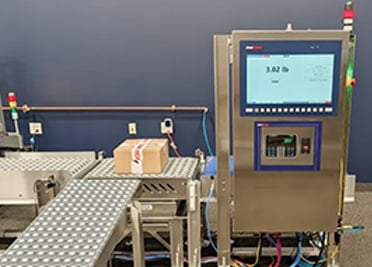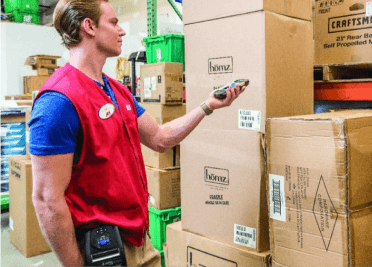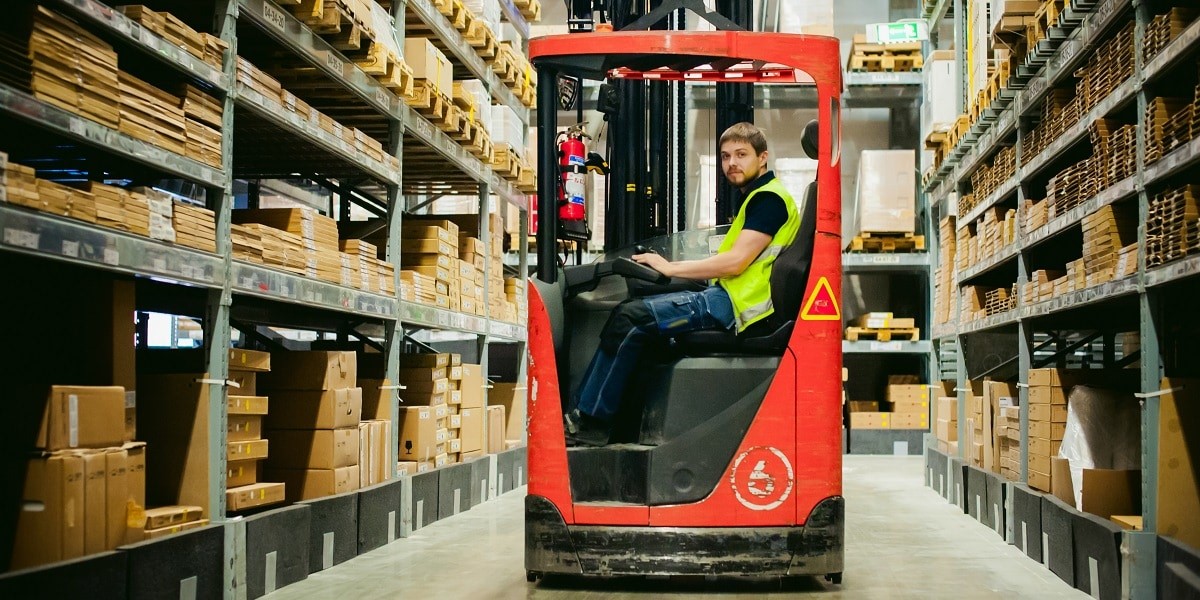Gone are the days when distribution centers would adopt new technologies and processes gradually — even over decades. With the exponential increase in customer demands, technological advancements and fierce competition, DCs are now under heightened pressure to speed up order fulfillment and optimize their operations.
However, outdated technology and inefficient processes that hinder the growth of DCs cannot be replaced overnight, and automation alone is not enough.
While many DCs have upgraded their systems and automated their facilities to keep up with the accelerated pace of change, they’re still dependent on the effectiveness of their DC workforce.1 The acute labor shortages in recent years, along with the rising cost of qualified workers, can quickly turn focusing on automation alone into a losing strategy.
At the same time, a lot of companies think they’re still unprepared for the disruption caused by enterprise-level digitalization. But organizations need to understand that digital transformation doesn’t necessarily need to be all-encompassing or to happen all at once to produce results.
For many companies, this process can start by addressing today’s service- level challenges and allowing them to do more and do it faster in the critical areas that are currently underperforming.
Exceed Customer Expectations
One of the biggest concerns when managing DCs is the rapid growth of e-commerce, along with rising consumer expectations for same-day and free delivery.
Because of the generational shift — where “digital native” Generation Z is entering the workforce and spending their money predominantly online — it’s expected that e-commerce sales will keep rising.
According to eMarketer research, online sales will double in growth by 2022.2
Remember when five- to seven-day shipping windows were acceptable? We’ve rapidly moved from two-day to next-day to same-day delivery. Fifty-four percent of U.S. consumers under the age of 25 admitted in a recent study that same-day shipping is their number-one purchase driver, while 79 percent of U.S. consumers said that free shipping would make them more likely to shop online. Further research shows that 95 percent of people take action to qualify for free shipping.
Expectations around shipping speed aren’t letting up, as competitors continue to reduce shipping windows to differentiate. Truncated shipping is becoming the new normal and transportation and logistics (T&L) operations must learn to adapt.
All these factors are pushing traditional distribution and fulfillment models beyond the limits of their capabilities.
How DCs are responding to demand?
- Improving DCs. Increasing productivity and efficiency within existing warehouses can be achieved by investing in technology and automation.
- Expanding DCs. Expanding your DC to meet demand: 340 million square feet of global warehouse space are being added every year.
- Building a new DC. Development of new warehouses and distribution centers in the 12 main U.S. inland-port markets is at almost twice the national rate, according to a recent report from CBRE.
- Flexible DC models. DCs sharing space and pop-up DCs, or temporary spaces, are gaining momentum, and are a versatile solution for those with limited space availability.
Transparency is the New Normal
Transparency has become a necessity, both internally and externally, as companies struggle to meet customer demands and stay competitive.
Greater visibility can be achieved through centralizing data that is usually scattered in different places throughout the organization. DCs perform better when there is greater transparency and when they have access to real-time data. All data must be stored in one place — and should be readily and easily accessible to all interested parties.
This need for transparency is driven by customer demands on the one hand, and business operations on the other.
Customers want transparency for a number of reasons. They now expect to have digital access to their purchase records — they want to know the status of their orders, digitally transmitted from their arrival to their exit from a facility.
But it’s more than just customer curiosity.
According to the World Health Organization, about 420,000 people die each year due to food poisoning. Tracing goods from “field to fork,” or food back to its point of origin, is crucial for speeding up investigations and stopping the spreading of diseases.
While the safety of customers is paramount, strict regulations add to the need for transparency. Regulations like the Tobacco Products Directive (TPD) in Europe, which requires EU-wide tracking of tobacco and tobacco-related products, must be strictly adhered to.
Visibility can also make a difference in identifying fraudulent products. Easily tracking back the path of origin of counterfeit or other fraudulent products can deter such actions in the future.
Improving operational transparency is also a top priority for DC managers because of trade regulations, cybersecurity threats and environmental concerns.
Managing trade regulations — from protocols on hazardous substances to compliance with the U.S.’s Dodd-Frank Act — must be made accessible throughout the DC. Constantly changing and complex trade regulations in other parts of the world such as APAC make operational transparency key to reacting and staying ahead of requirements.
According to a survey conducted in 2018 by the Ponemon Institute, 56 percent of organizations have had a breach.9 With customer data at stake, cybersecurity threats must be quickly identified and information about them disseminated using an integrated solution.
The “greening” of supply chains is also becoming a tangible reality. The public is becoming increasingly aware of and interested in environmental issues and global warming, and are translating these concerns into business demands. Consumers want to have visibility into how environmentally friendly supply chains are and have begun to take interest in this aspect of businesses, as well.
Reimagine the Supply Chain
When adopted and implemented correctly, innovative technologies become the drivers for positive disruption within DCs.
The concept of integrating technological advancements in DC operations is not novel, but distribution centers and fulfillment centers are accelerating their adoption of newer technology solutions.10
How are DCs are using technology?
- Consolidated Data and Connectivity — making decision-making easier and more data-driven
- Digitalization — simplifies processes across DCs (like replacing paper processes and error-prone activities)
- Virtual Reality and Augmented Reality — offer numerous applications, one of the most noteworthy being predictive modeling, which allows managers who may not be on-site to see in real time whether processes are running as planned.11
- A Digital Twin — enables virtual testing and commissioning through a digital mirror of supply-chain operations
- The Cloud — consolidates data storage and online applications
- Automation — from robotics to scanners, a wide range of automated solutions are helping DCs increase productivity and efficiency to handle the ever expanding e-Commerce demand.
Rising Shortages
Labor issues and shortages are only adding to the complexities DCs must navigate. The accelerated growth of e-commerce is currently creating a demand for over 400,000 distribution center workers in 2018–19, which is unsustainable in the already labor-strapped industry.12
Labor shortages have many causes, but one of the most noticeable is the aging DC workforce, while millennials manifest little interest in T&L jobs.13 DC workers are frequently employed part-time or stay at DCs for shorter lengths of time due to competition, so training expenses accrue.
In addition to the changing workforce demographics and rising labor costs, industry growth outpaces the labor pool by a ratio of six to one.14 And when you consider that 60 percent of supply chain jobs require skills that are possessed by only 20 percent of the workforce, it’s evident that maintaining a staff of qualified employees is becoming a struggle for many DCs.
DCs are currently caught between two conflicting forces: workers who want and need higher pay, and customers who want fast and flawless deliveries at no extra cost.
Future-Proof Your Distribution Center
With such staggering change and complexity, how do you decide where to start and on what to focus your attention? Honeywell has introduced four key areas of interest to start improving processes today and prepare your business for the future.
- Faster, more accurate fulfillment
- The average midsize DC loses $400K every year to mis-picks15
- Achieve 99.99 percent order accuracy with voice technology that adapts to fluctuations in demand and works seamlessly with your existing system
- Efficient real-time inventory management
- 340 million square feet of global warehouse space is added per year
- Deploying a mobile solution with advanced technology is 25 percent more productive and 50 percent more accurate than paper or manual methods in the warehouse, reducing “dock-to-stock” cycle times and effectively managing DC capacity
- Transparent enterprise asset management
- 10 to 30 percent of enterprise devices are either stolen or go missing
- Honeywell’s Operational Intelligence assigns assets to unique departments and tracks their location for detailed accountability
- Retaining labor and promoting well-being for a more productive workforce
- 84 percent of hiring managers report few or no qualified applicants for roles in the DC
- Our labor management and analytics can predict employee attrition at least two weeks in advance with 95 percent confidence, and give them ergonomic, effort-saving technology solutions to help retain your existing workforce
Success Begins with A Strong Partnership
AbeTech customizes solutions by working closely with clients to identify their unique needs, challenges and goals.
To learn more about Honeywell solutions, Contact an AbeTech Solution Experts today!










